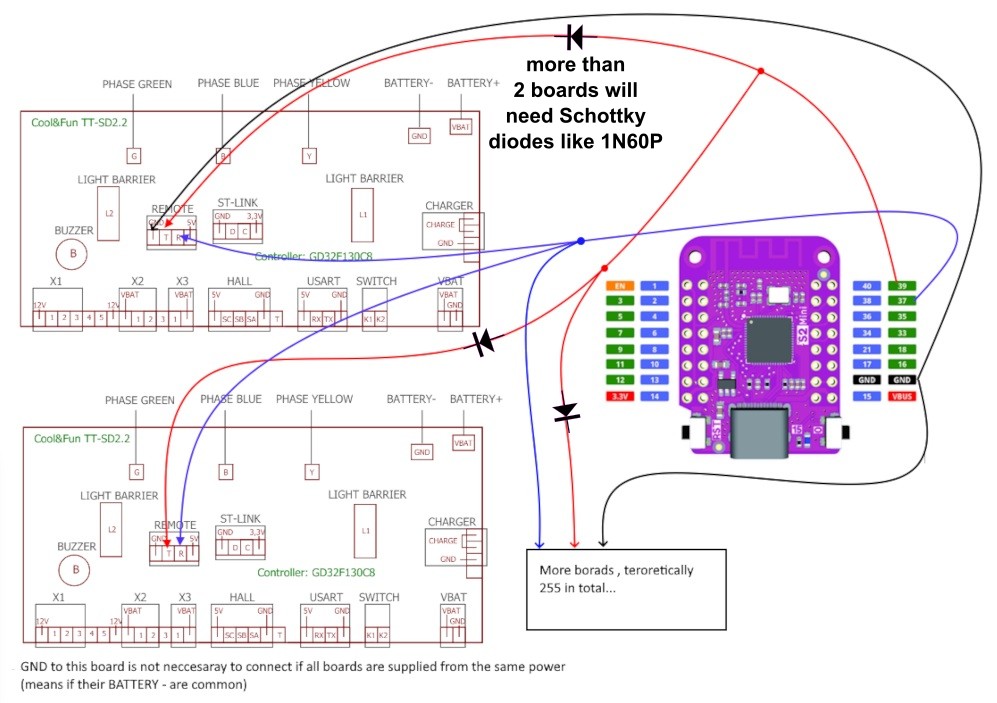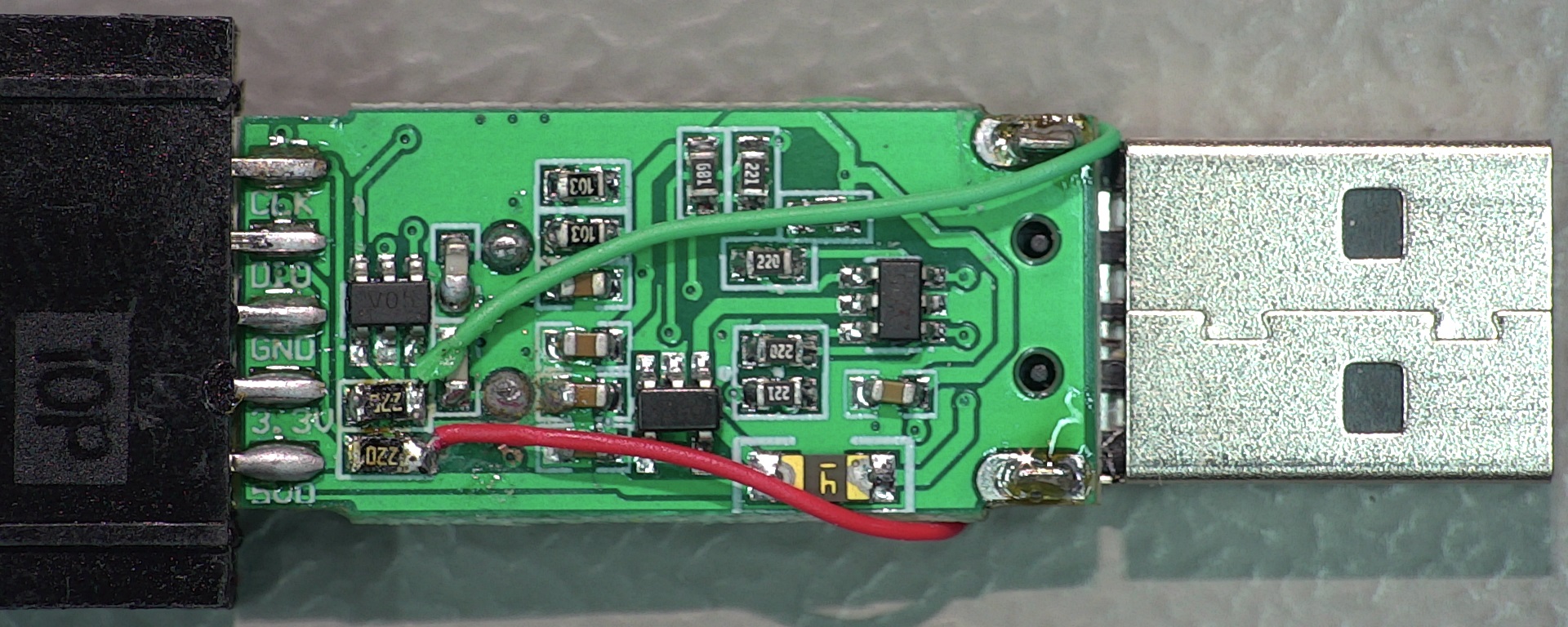-
Notifications
You must be signed in to change notification settings - Fork 27
old README project page
Hoverboard Hack Firmware Generation 2.x for the Hoverboard with the two Mainboards instead of the Sensorboards (See Pictures).
This repo contains open source firmware for generic Hoverboards with two mainboards. It allows you to control the hardware of the new version of hoverboards (like the Mainboard, Motors and Battery) with an arduino or some other steering device for projects like driving armchairs.
The structure of the firmware is based on the firmware hack of Niklas Fauth (https://github.com/NiklasFauth/hoverboard-firmware-hack/). These "new" boards are using GD32F130C6, so the project is adapted to that ic
- It's required to install Keil.
- #define REMOTE_DUMMY // will spin forward and backward with no remote control
- #define REMOTE_UART // uart serial protocol with 19200 baud as Arduino Nano SoftwareSerial can not do 115200
- #define REMOTE_UARTBUS // ESP32 as master and multiple boards as multiple slaves ESP.tx-Hovers.rx and ESP.rx-Hovers.tx


- #define REMOTE_CRSF // https://github.com/RoboDurden/Hoverboard-Firmware-Hack-Gen2.x/issues/26
The hardware has two main boards, which are identical equipped. They are connected via USART. Additionally there are some LED PCB connected at LED1(battery indicator) and LED2(auxiliry lights). There is an programming connector for ST-Link/V2 and they break out GND, USART/I2C, 5V on a second pinhead(look at the picture).
The reverse-engineered schematics of the mainboards can be found here(GEN 2): https://github.com/krisstakos/Hoverboard-Firmware-Hack-Gen2.1/blob/main/Schematics/HoverBoard_CoolAndFun.pdf
The firmware is built with Keil (free up to 32KByte). To build the firmware, open the Keil project file which is includes in repository. Right to the STM32, there is a debugging header with GND, 3V3, SWDIO and SWCLK. Beware that some verions/layouts have GND, SWDIO, SWCLK, 3V3 header ! So always check GND and the 3.3V pins with a multimeter, with DIO and CLK simply try and error :-) Connect GND, SWDIO and SWCLK to your SWD programmer, like the ST-Link found on many STM devboards.
- If you never flashed your mainboard before, the controller is locked. To unlock the flash, use STM32 ST-LINK Utility or openOCD. instructions here. ST-Link-Utility is out of date and needs a few old mfc42.dll files! Please open an issue when you know how to unlock flash with the STM32CubeProgrammer. If even ST-Link-Utility can not access the board, the NREST (no reset = pull to gnd to reset) pin needs to be pulled down by the RST pin of the St-link-V2 dongle (which might need a npn transistor to invert the RST signal to a NREST signal). If you don't want to fiddle with some tiny tiny smd resitor to access the NREST pin, simply turne on the power quickly after hitting strg+B, and after about 20 tries the mcu will just power up when the stlink utility is trying to access. Then you can disable read-protection and flash with Keil (or the ST-Link-Utility?).
- To flash the STM32, use the STM32 ST-LINK Utility (2023: STM32CubeProgrammer) as well, ST-Flash utility or Keil by itself. I was also having 100% success rate with platform.io project from here just for uploading. You have to rename the output file *.axf to firmware.elf and move/copy it to the platform.io project, then upload. Bonus: Kristian Kosev (krisstakos) has included rename.bat which will rename and move your output file, but you have to specify the right paths.
- Hold the powerbutton while flashing the firmware, as the controller releases the power latch and switches itself off during flashing
- If Flashing with Keil using a ST-Link dongle crashes, download a fixed dll here: https://developer.arm.com/documentation/ka005381/latest
- ST-Link_Utility and Stm32CubeProgrammer seem to have problems to programm the GD32F130. Try
st-flash write hoverboard.bin 0x8000000with this open source utility: https://github.com/stlink-org/stlink/releases (ordinary Windows 10 64 bit: x86_64-w64-mingw32.zip ) - If you are running Windows, make a batch file in the st-flash-exe folder with the single line
st-flash --connect-under-reset write hoverboard.bin 0x8000000https://pionierland.de/hoverhack/gen2/ReadyToFlash/st-flash%201.7.0%20Windows%20x86%2064bit.zip locate your latest hoverboard.bin file in HoverBoardGigaDevice/BinariesToFlash If this does not work, you need the NREST pin Or simply turn hoverboard off and on again and then click the enter key to start the bat file. Repeat many times.. You can also rework the RST pin of these cheap ST-Link-V2 dongles to work for our SWD protocol (not the UART): For the following ST-Link dongle continue here: https://research.kudelskisecurity.com/2020/04/15/swd-part-3-swo-and-nrst/
For the following ST-Link dongle continue here: https://research.kudelskisecurity.com/2020/04/15/swd-part-3-swo-and-nrst/
 Unplugging the st-link-v2 of course also helps sometimes..
Unplugging the st-link-v2 of course also helps sometimes..

SWD Flashers
SWD Flashing
- Flash via Keil
- Flash via PYocd
- Flash via StLink Utilities
- Flash via Stm32 Cube Programmer
- Flash via st-flash.exe
Submit New Layout